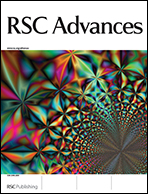Tuning surface micropattern features using a shape memory functional polymer†
Abstract
Living cells can alter their shapes and functions in response to physical cues at the cell–substrate interface, and consequently the temporal variations of the substrate surface are thought to be very important in governing cell behaviors. In this study, a thermally-activated shape memory function was employed to tune the dynamic change of the surface topography features on a


 Please wait while we load your content...
Please wait while we load your content...